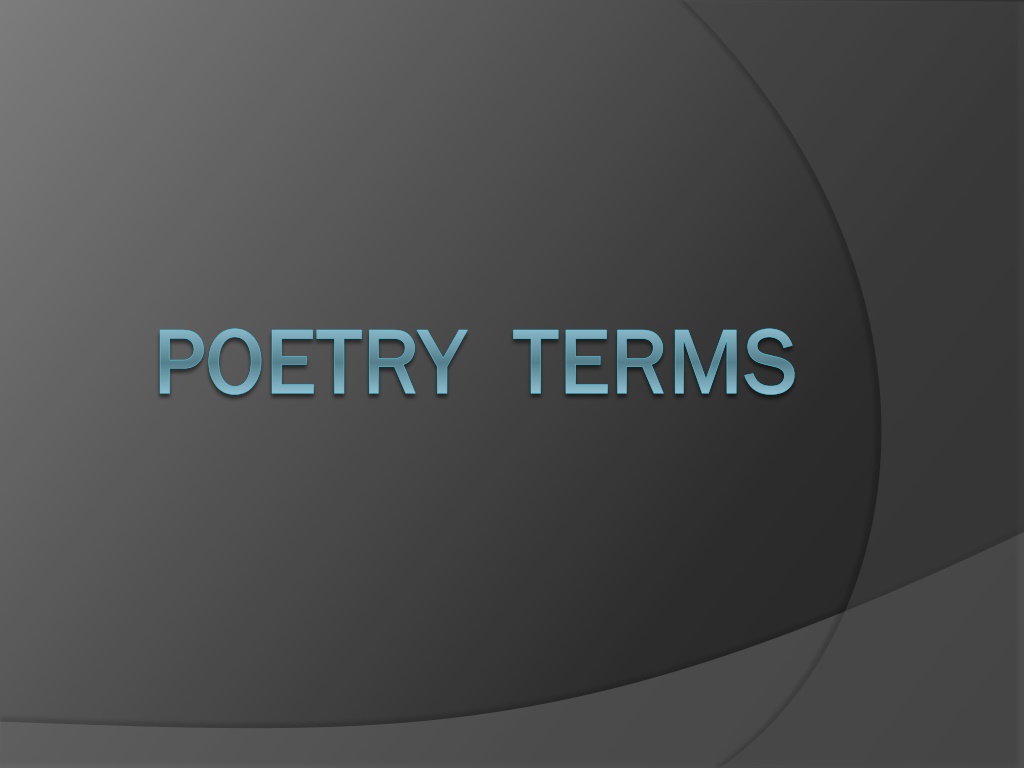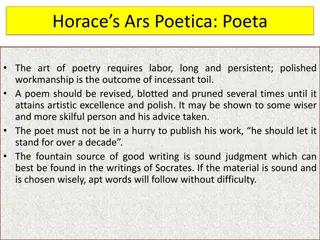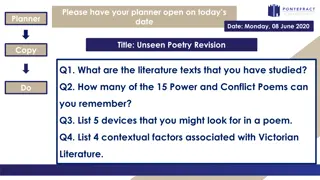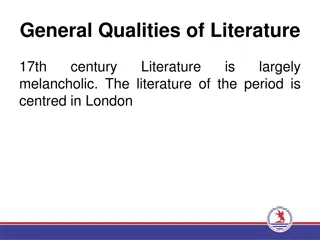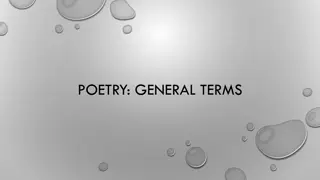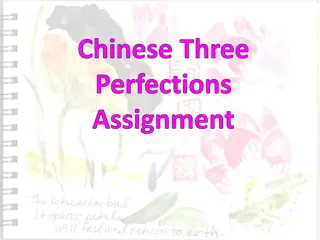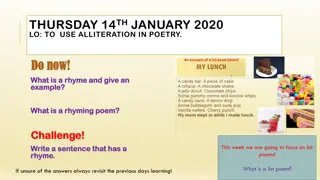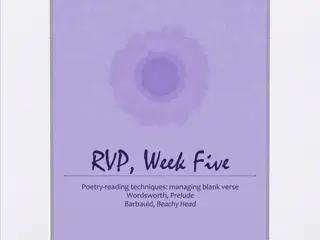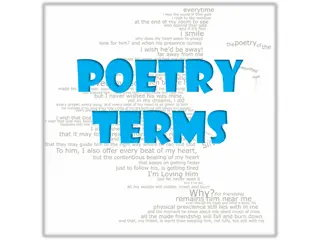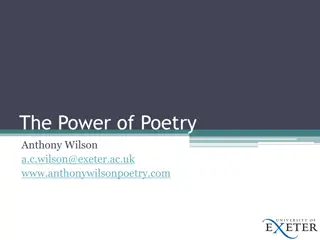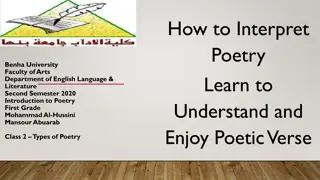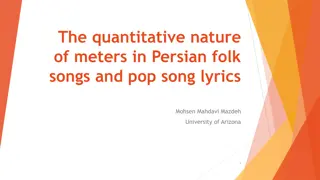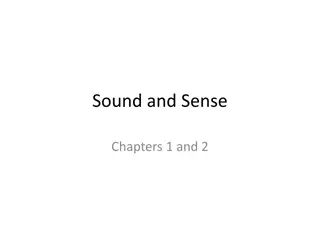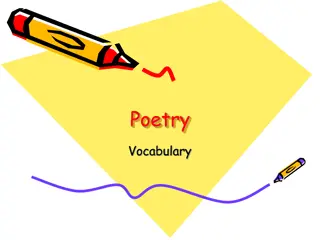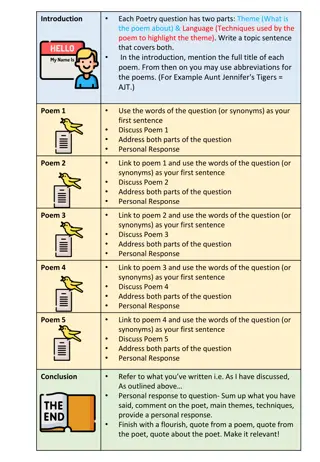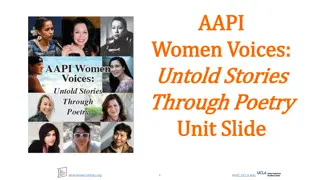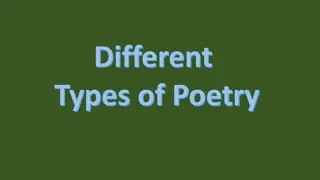Exploring Poetry: Terms and Techniques
Explore the world of poetry with a focus on key terms and techniques such as lyric poetry, myth, rhythm, epithet, imagery, implied metaphor, epic, onomatopoeia, symbolism, alliteration, rhyme, assonance, and personification. Enhance your understanding of these concepts through vivid examples and images, enriching your appreciation for the art of poetry.
Download Presentation

Please find below an Image/Link to download the presentation.
The content on the website is provided AS IS for your information and personal use only. It may not be sold, licensed, or shared on other websites without obtaining consent from the author. Download presentation by click this link. If you encounter any issues during the download, it is possible that the publisher has removed the file from their server.
E N D
Presentation Transcript
POETRY TERMS POETRY TERMS
Lyric Poetry a small poem that displays the thoughts and feelings of the poet.
Myth a traditional poem that tells a historic story or a popular belief; often deals with heroes, the supernatural, or ancestors
Rhythm a patterned flow of sound
Epithet descriptive term used to characterize a person or a thing
Imagery Word or group of words which appeal to one or more of the senses: sight, taste, touch, hearing, and smell.
Implied Metaphor Uses words to suggest the comparison such as love bursts into bloom. It does not directly state the comparison.
Epic a story poem that often celebrates a hero or legend (Odysseus or Hercules)
Onomatopoeia words that are pronounced to imitate their sounds (buzz, fizz, click, zoom, chirp).
Symbolism Stands for itself and for something beyond itself as well. (The bald eagle symbolizes the United States.)
Alliteration The repetition of the same consonant sounds in a line of poetry. (seven silver swans swam )
Rhyme The similarity of ending sounds existing in lines of poetry. Internal: rhyme within the line of poetry. End: rhyme at the end of a line of poetry.
Assonance the repetition of identical or similar vowel sounds, especially in stressed syllables
Personification providing human characteristics to a lifeless object. ( This poetry gets bored of being alone, it wants to go outdoors to chew on the winds. Living Poetry by Hugo Margenat
Extended Metaphor Metaphor that is developed over several lines of writing or throughout the poem.
Simile figure of speech that expresses the comparison of two objects using like or as (as snug as a bug in a rug)
Connotation/Denotation Connotation: attitudes and feelings associated with a word. (thrifty vs. stingy) Denotation: the dictionary definition of a word (literal meaning)
Metaphor figure of speech that expresses the comparison of two objects without using like or as
Iambic Pentameter A line of poetry that contains five iambs. But soft! What light through yonder window breaks.
Oxymoron a combination of terms that appears to contradict one another. jumbo shrimp; stupid genius; smallcrowd)
Figurative Language Strategies that authors use to use literary devices such as metaphors, simile, repetition, etc. Place your own example.
